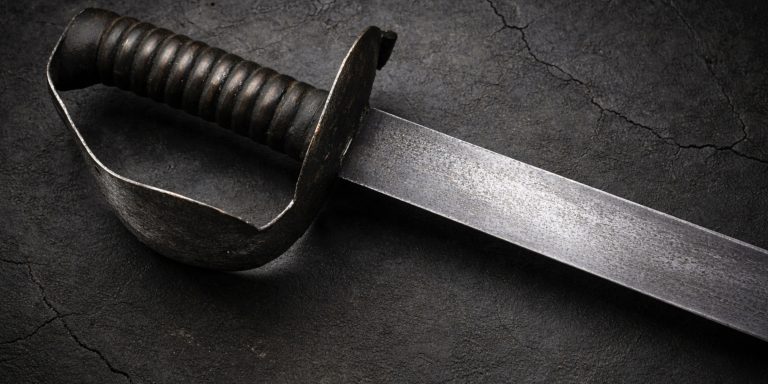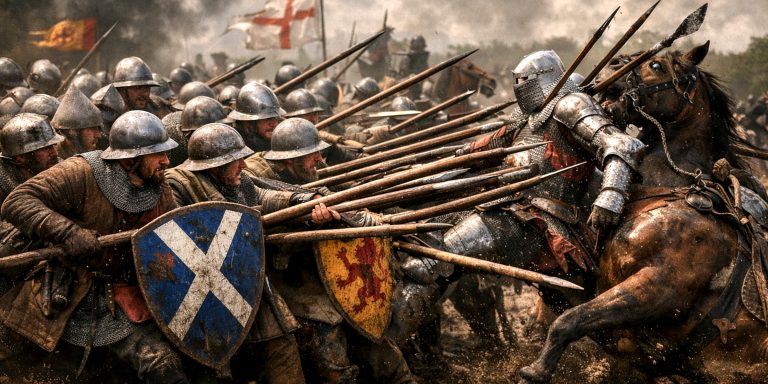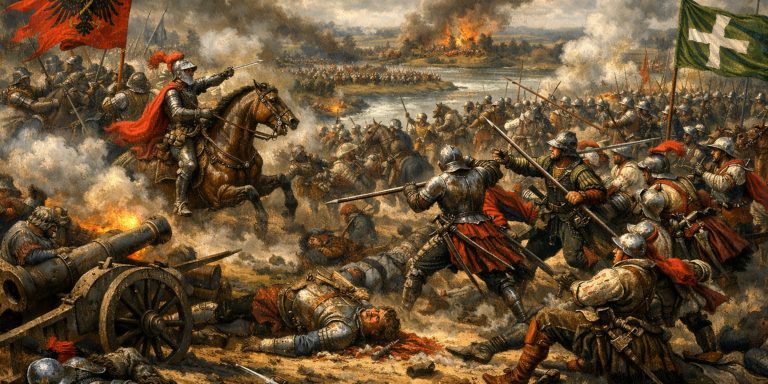
The Tudor era (1485–1603) marked a turning point in English warfare. Medieval chivalry and hand-to-hand combat were fading, replaced by formations, firearms, and fortifications. Yet the period still produced some of the most distinctive weapons ever forged. From longbows to early muskets, and from basket-hilted swords to bronze cannon, the Tudor arsenal was as varied as the ambitions of its monarchs.
The Last of the Longbowmen
At the start of the Tudor age, the longbow still dominated. Henry VII’s armies included archers trained in the same tradition that had crushed the French at Agincourt. Henry VIII went further, enforcing archery practice by law and ensuring that every man was equipped to shoot.
Yet the longbow’s reign was ending. Its rate of fire remained unmatched, but training a skilled archer took years. The arrival of the arquebus, a matchlock firearm that required less strength and skill, signalled the future. By Elizabeth I’s time, musketeers were replacing bowmen in English ranks.
Common projectile weapons of the Tudor period:
- English longbow – traditional yew design, around 6 feet in length
- Arquebus – early matchlock gun using lead shot and black powder
- Caliver – lighter, more accurate firearm used by Elizabethan troops
- Crossbow – still used for siege defence and hunting
Pike and Bill: Weapons of the Common Soldier
Infantry tactics changed dramatically in the sixteenth century. The pike, a long spear up to 18 feet, became the backbone of Tudor formations. Soldiers stood shoulder to shoulder, creating a forest of points that could halt cavalry charges or pin an enemy in place.
Alongside them were men armed with bills, a traditional English weapon derived from the agricultural billhook. The bill was sturdy, easy to make, and capable of hooking riders from their saddles or hacking through armour.
Standard infantry weapons included:
- Pike – long polearm used in formations, effective against cavalry
- Bill – curved, axe-like weapon popular with English levies
- Halberd – combination of spear, axe, and hook used by guards and sergeants
Tudor Sword Types
The sword remained the symbol of rank, courage, and martial skill. Tudor swords evolved rapidly in design, influenced by both Italian and German craftsmanship.
Key Tudor sword types:
| Sword Type | Description | Common Use |
|---|---|---|
| Broadsword | Wide, double-edged blade with early basket guard | Infantry and officers |
| Bastard Sword (Hand-and-a-Half) | Long-bladed sword usable with one or two hands | Transition from medieval style |
| Rapier | Slim, elegant thrusting sword with ornate hilt | Civilian duelling and court fashion |
| Falchion | Single-edged chopping sword with curved blade | Common among sailors and soldiers |
| Cutlass | Short, curved blade suited to close-quarters combat | Naval crews and privateers |
The rapier deserves special mention. By Elizabeth’s reign, it had become the ultimate mark of a gentleman. Its long blade and intricate guard reflected the growing obsession with duelling culture and self-image. In contrast, the broadsword remained the soldier’s weapon, sturdy, practical, and brutally effective.
Gunpowder and Artillery
Henry VIII invested heavily in cannon and gunfoundries. He imported bronze guns from Italy and cast his own at Greenwich. Fortresses like Deal and Pendennis were built to mount these new weapons, creating a chain of coastal defence.
Types of Tudor artillery:
- Culverin – long-barrelled gun for long-range fire
- Saker – medium cannon, commonly used on ships
- Demi-cannon – heavy gun for fortress or naval use
- Falconet – small gun used for field or shipboard defence
These guns changed warfare forever. Battles were no longer decided by the skill of archers or the charge of knights, but by the thunder and smoke of gunpowder.
The Navy and the Age of Sail
Under Elizabeth I, England’s navy became a global force. Ships like the Ark Royal and Revenge carried mixed batteries of culverins, sakers, and smaller swivel guns. Sailors armed with cutlasses, daggers, and boarding pikes defended their decks in close combat.
It was this combination of disciplined gunnery and brutal close fighting that defined English naval warfare, setting the stage for later dominance at sea.
Legacy of Tudor Weaponry
The Tudor arsenal bridged two worlds: the medieval and the modern. Longbows and bills fought alongside muskets and cannon. Swords remained personal symbols of power, even as firearms reshaped the battlefield.
The period’s weapons reflect the energy and ambition of Tudor England itself, restless, experimental, and hungry for change. As a historian, I find that mix of tradition and innovation deeply human. You can see it in the curve of a falchion, the weight of a broadsword, or the cast marks on a bronze cannon. These were not just tools of war but emblems of an age on the edge of transformation.



